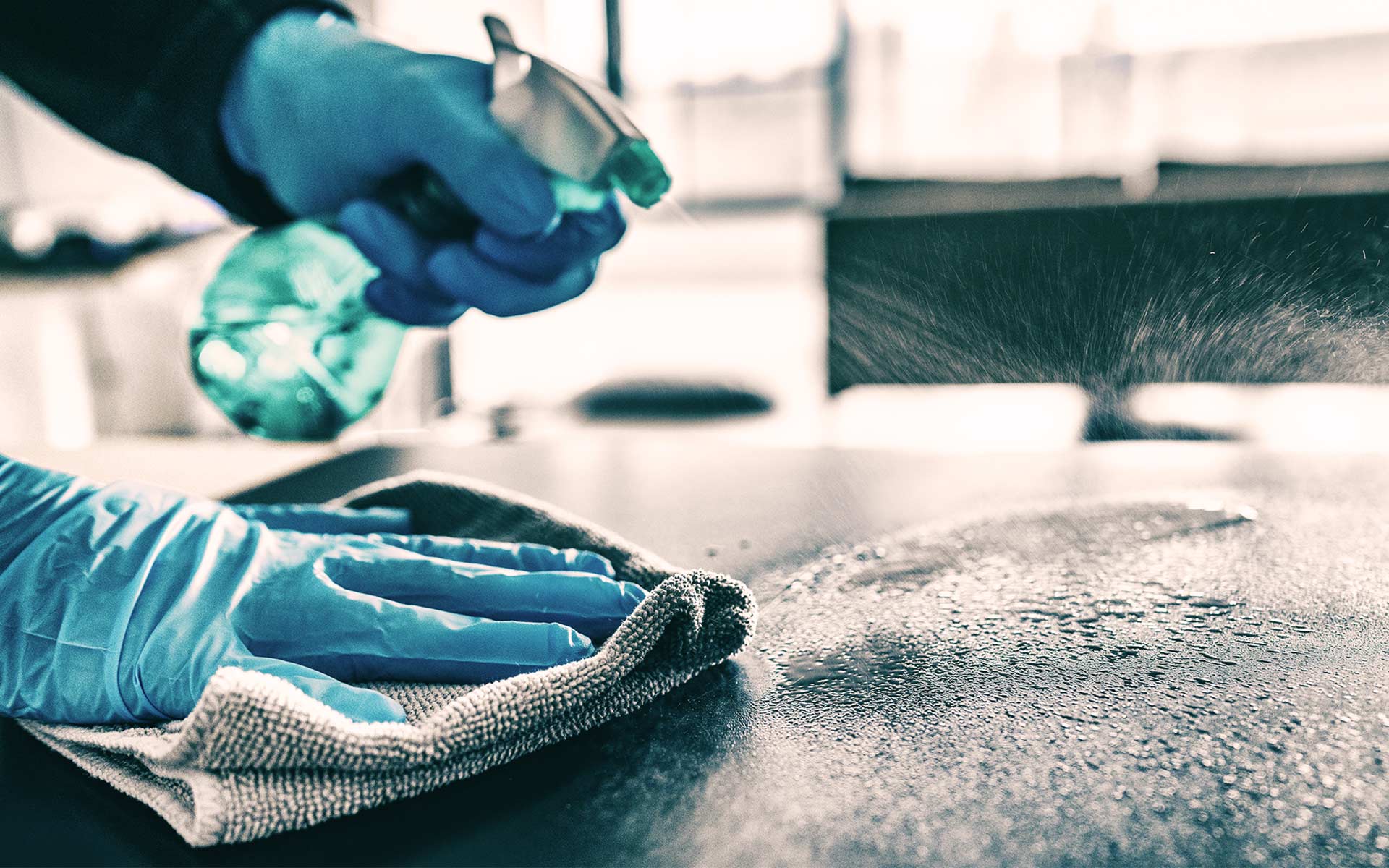"Properly sanitizing and maintaining workplaces requires vigilance, education and strict adherence to the latest standards and protocols in order to protect workers and keep projects moving in a timely fashion."
November 19, 2020
by Star Building Systems

Ask any reputable construction firm about its top priority and invariably, the answer is “safety.” As our industry navigates the many challenges of the COVID-19 pandemic, sanitizing jobsites—whether construction sites or indoor offices—and keeping employees safe from infection has taken on amplified significance.
Properly sanitizing and maintaining workplaces requires vigilance, education and strict adherence to the latest standards and protocols in order to protect workers and keep projects moving in a timely fashion. From hiring outside cleaning crews or establishing dedicated internal crews to creating stringent policies and properly sanitizing high-touch areas on a regular basis, there is much you can do to keep workplaces as safe as possible. Even engaging new technologies to minimize physical touches can play a role.
While our understanding of the novel coronavirus is still a work in progress, it is clear that the virus can linger on certain surfaces for hours or even days after exposure. As the CDC advises, cleaning and disinfecting public spaces including workplaces and businesses requires you to: “develop your plan, implement your plan, and maintain and revise your plan.” While specific guidelines may change over time, here are some general tips to sanitize your space and keep your team safe.
By clearly delineating who can touch the equipment and materials of a given crew (hint: only members of a particular crew on a jobsite should handle/move its own equipment), you can cut down on potential exposure and spread of the virus. Additionally, turning to technology solutions for paperwork etc. can help limit physical touches around a worksite.
such as hand-washing stations and portable toilets. Since many different people would come in contact with these areas, increasing the frequency of cleaning can help minimize the risk of spreading germs.
Although upfront costs may be higher than doing it yourself, hiring a qualified, professional cleaning /sanitizing crew adds assurance that protocols are being followed, not to mention your own team members’ time will be freed up to attend to customers and your ongoing projects. You can look for sanitizing companies that have experience in the construction sphere if jobsites are your concern, or experienced office cleaning crews for your firm’s workplace. Many such companies offer affordable, effective solutions and even use organic and/or environmentally friendly formulas that meet current cleaning standards. Some companies may even offer recorded visits with shareable video files so you can be sure the job was performed to your satisfaction.
If you decide that hiring an outside company is not right for your business, another option for maintaining sanitization requirement compliance is to assign a composite cleaning crew from each trade working at the project site, essentially spreading the responsibilities and time spent across the different functions…rather than spreading germs.
OSHA, for example, has put out COVID-19 guidance for the construction workforce in order to keep workers safe. Among the tips provided, beyond encouraging workers to stay home if they are sick and reporting any health or safety concerns are:
The CDC provides additional advice regarding proper cleaning and disinfecting of construction sites and of other facilities.
Some key points to remember when cleaning facilities is to use proper PPE for cleaning and then remove and dispose of after disinfection and to clean with a detergent soap or water solution before disinfection.
specifically from List N—which EPA expects are able to kill the coronavirus SARS-CoV-2 (COVID-19) when used according to the label directions. (NOTE: These agents are specific for surfaces, not humans.) EPA notes, too, that there may be other disinfectants that may meet the criteria, so check labels. EPA will update its list with additional products, as appropriate.
The CDC further urges everyone to follow the instructions on product labels to ensure safe and effective use of the product, adding that many products recommend:
If a disinfectant from the list isn’t available, the CDC recommends using a mixture of 5 tablespoons (1/3 cup) of bleach per gallon of water—which is good for floors and larger surface cleaning; 4 teaspoons of bleach per quart of water is good for spray bottle applications.
Remember, too, that this is an evolving situation where rules and guidelines are constantly changing. Updated federal and local regulations may be in place, so be sure to check for new guidelines to keep you and your team safe.
Become part of the powerful Star network. We invest in builders who understand the value of results and provide support that develops strong relationships between you and the entire Star team.
Your building is the cornerstone of the community where people live, work and play. Find a local Star Authorized Builder and let us help you bring your vision to life.